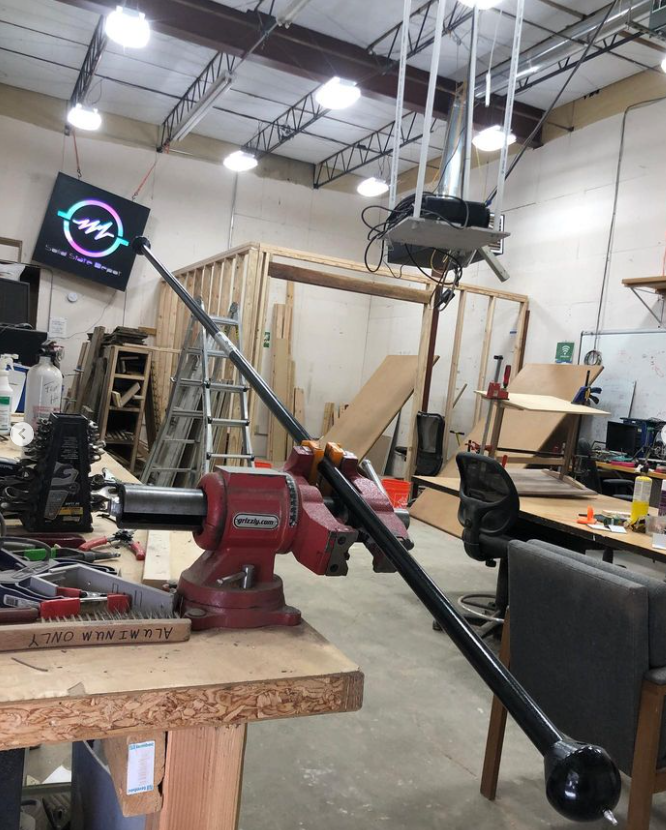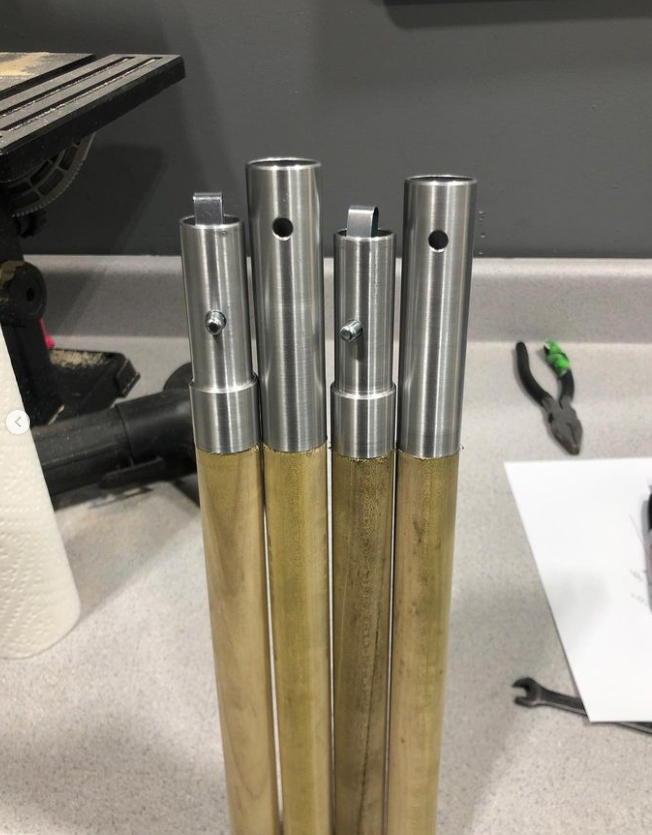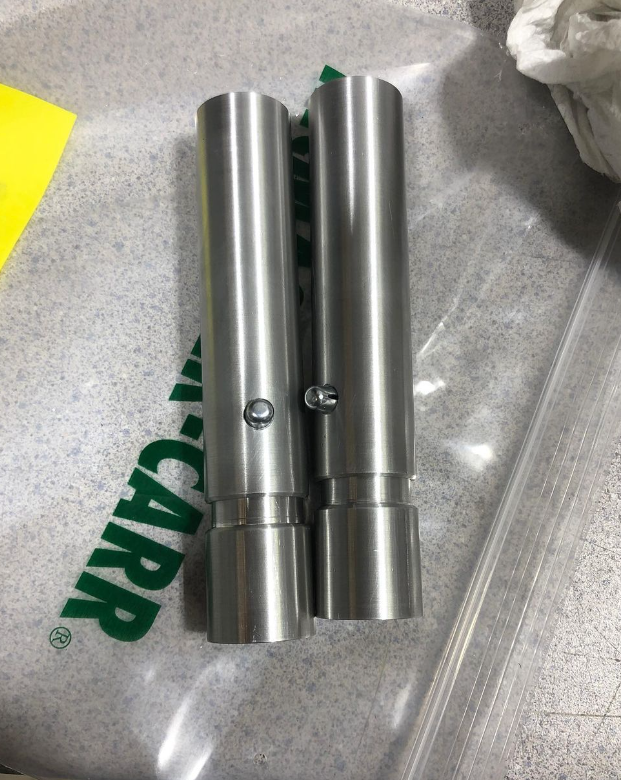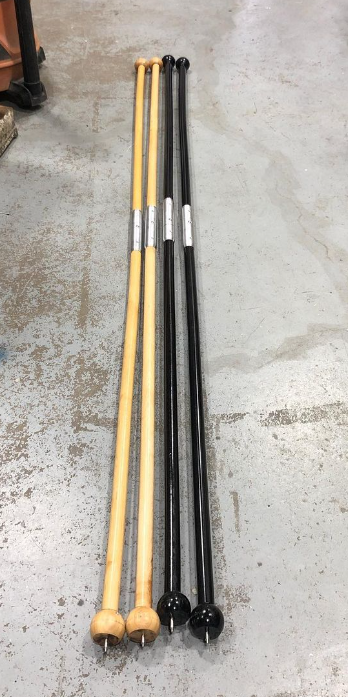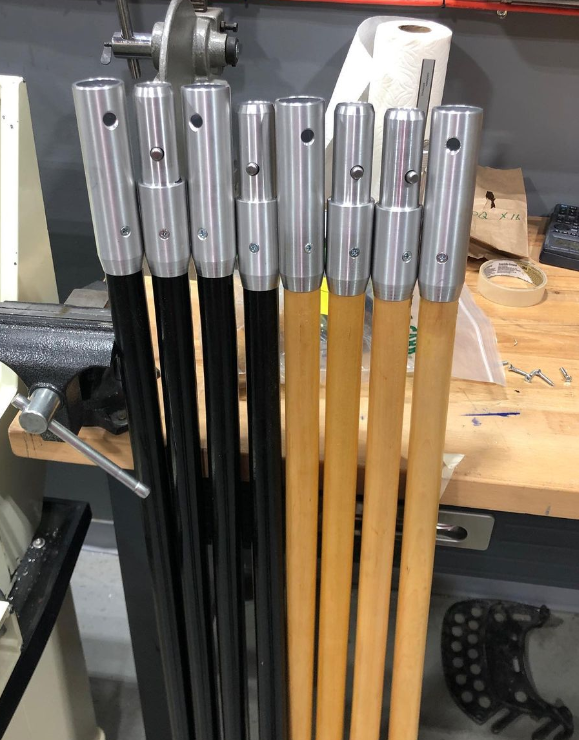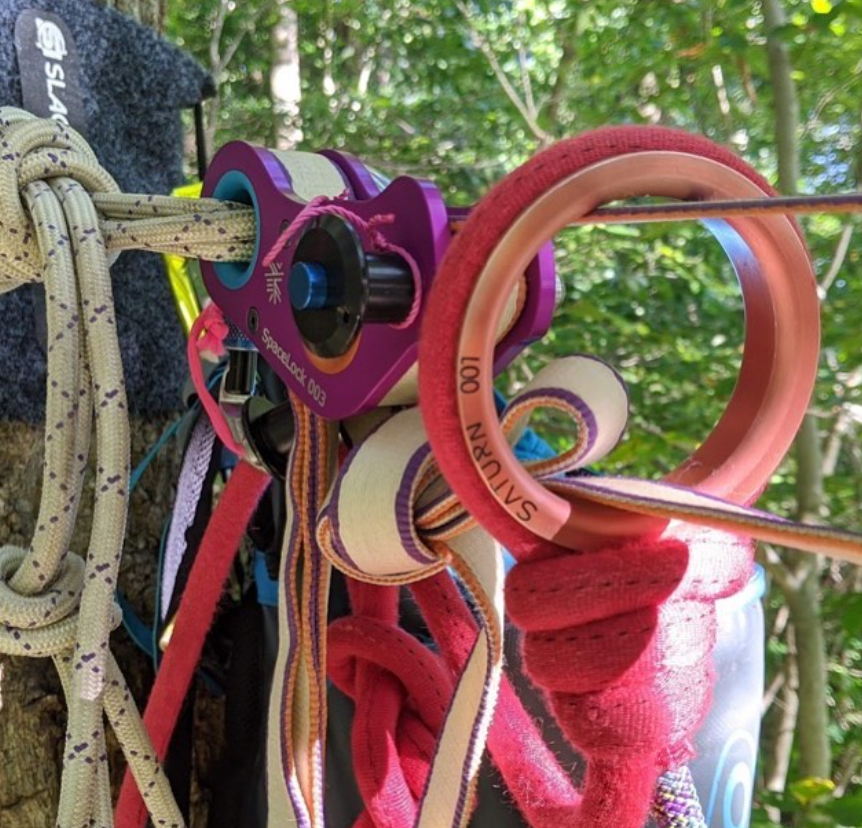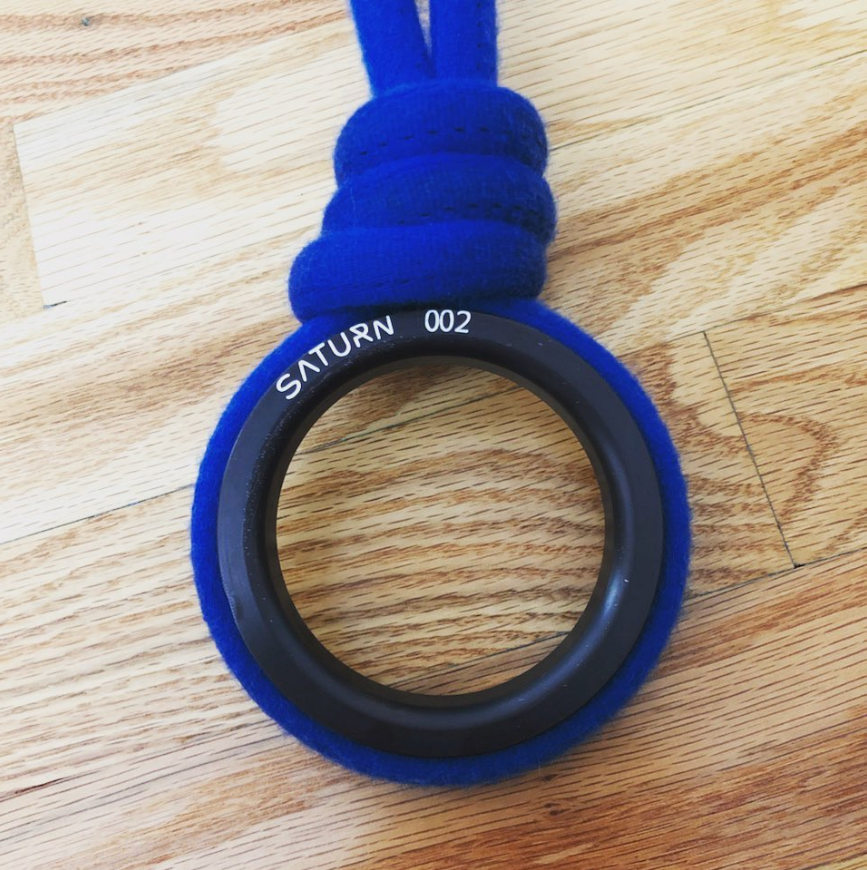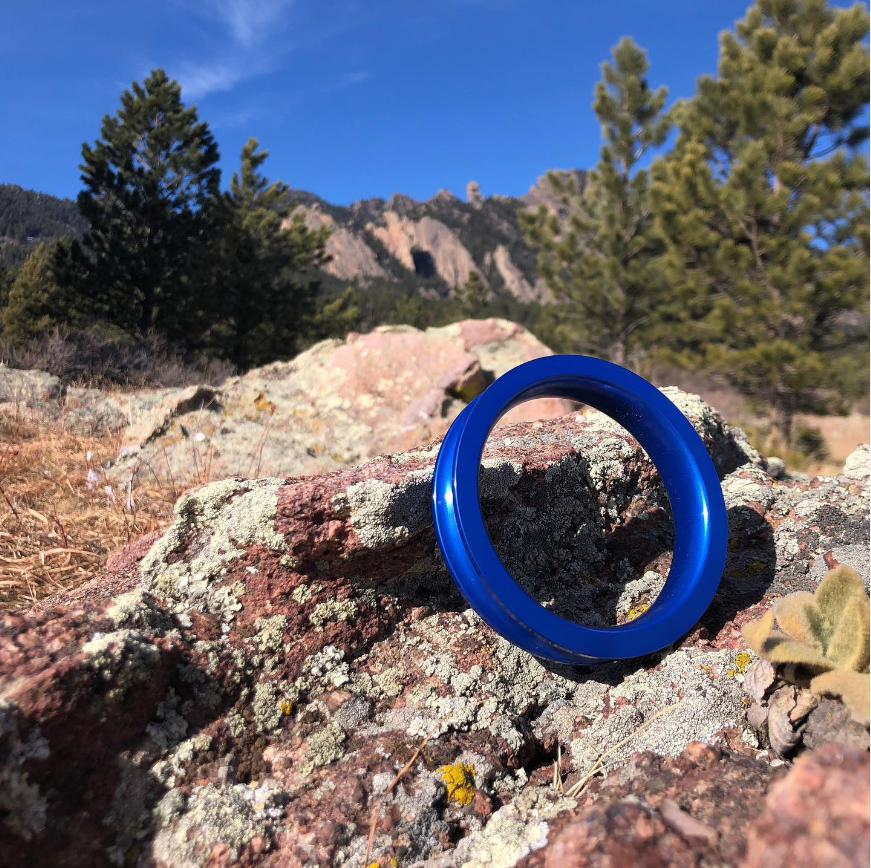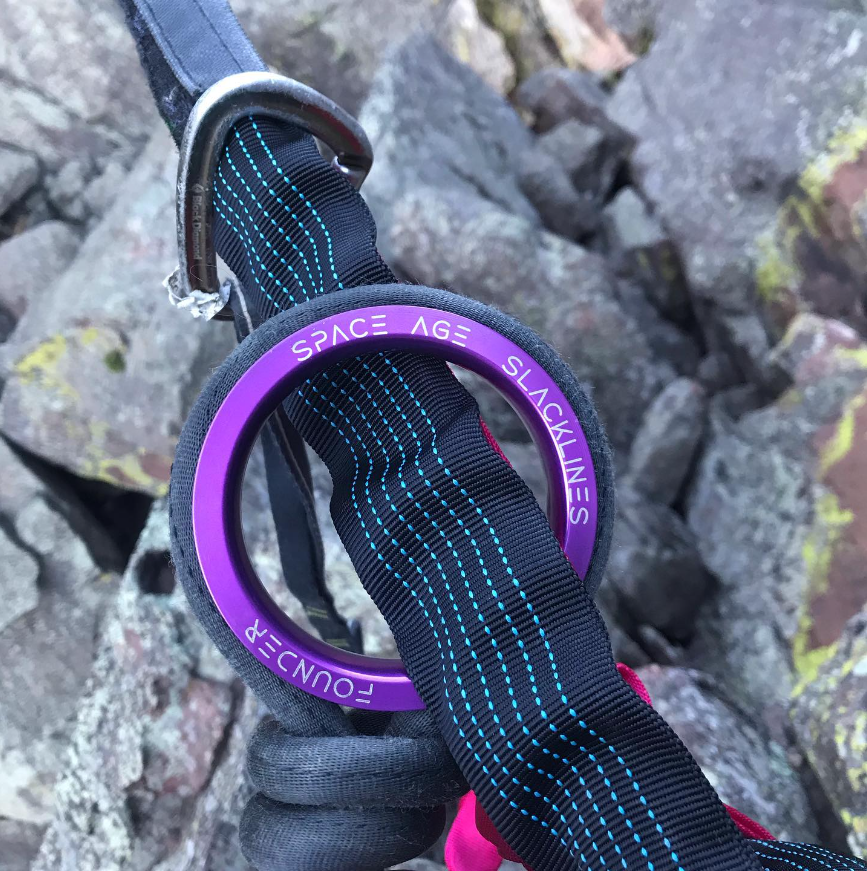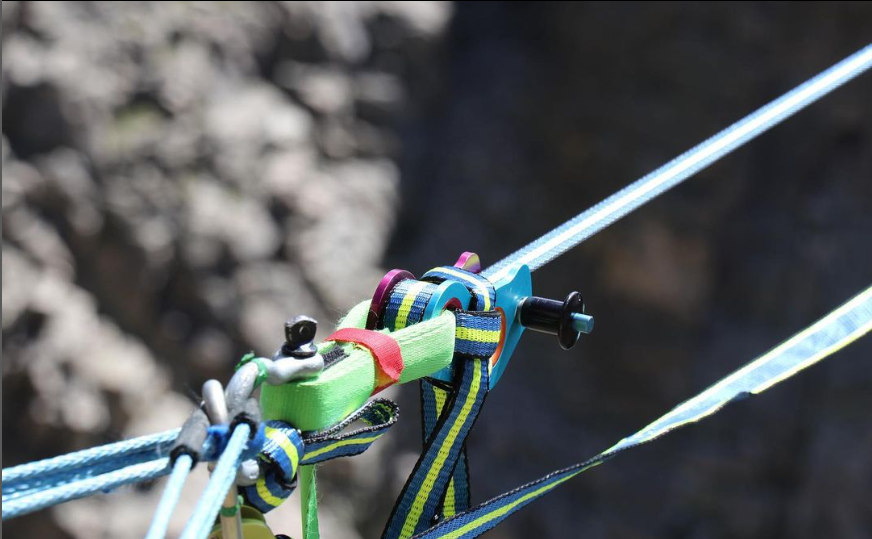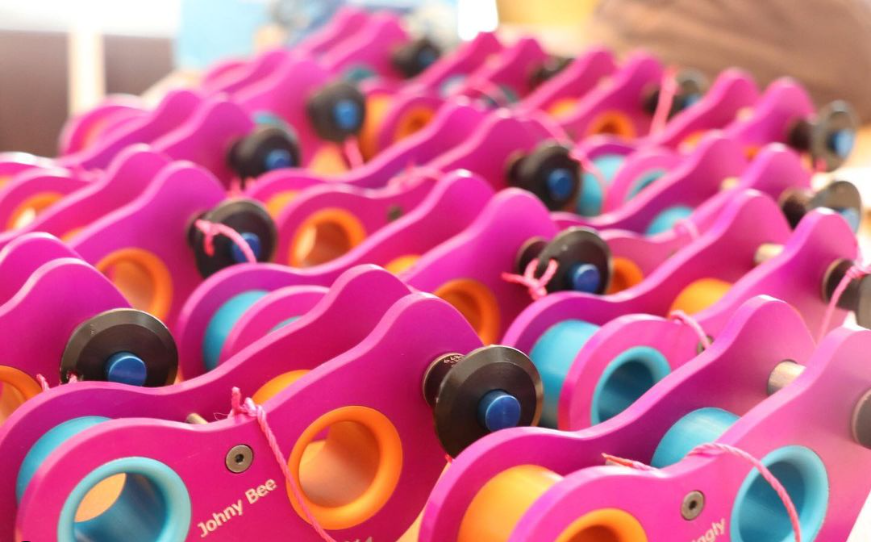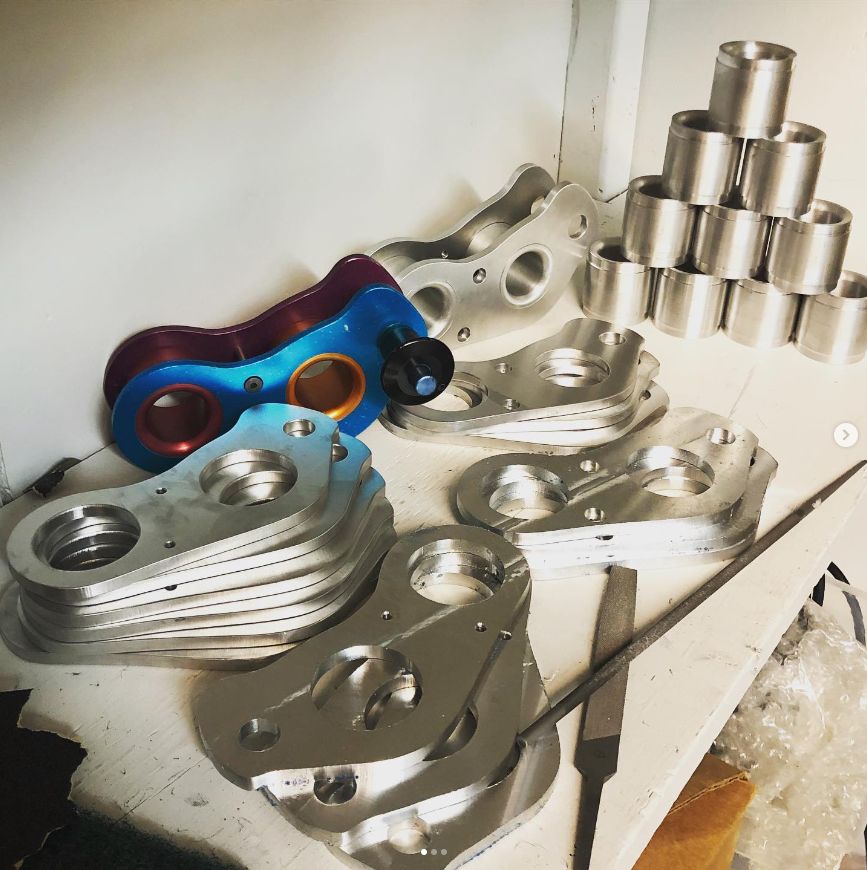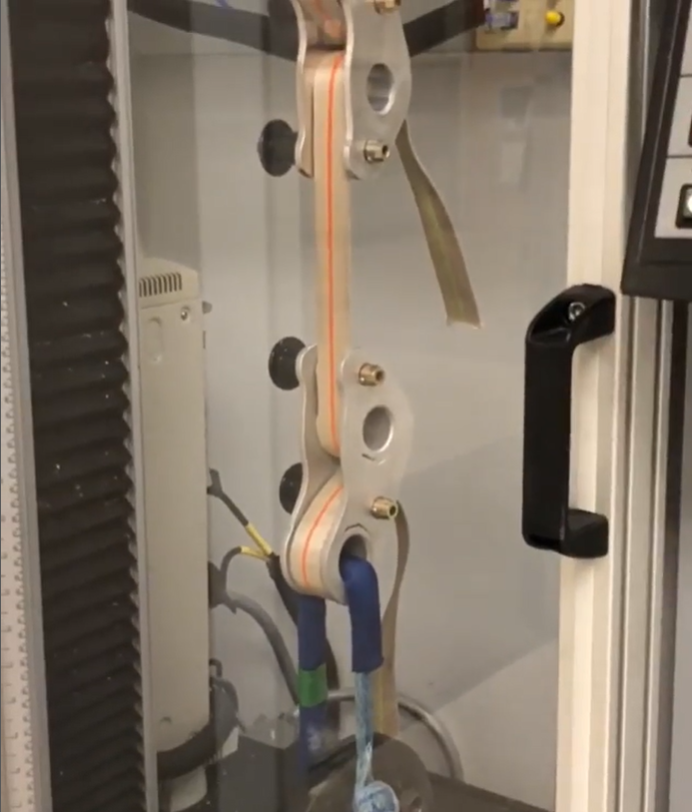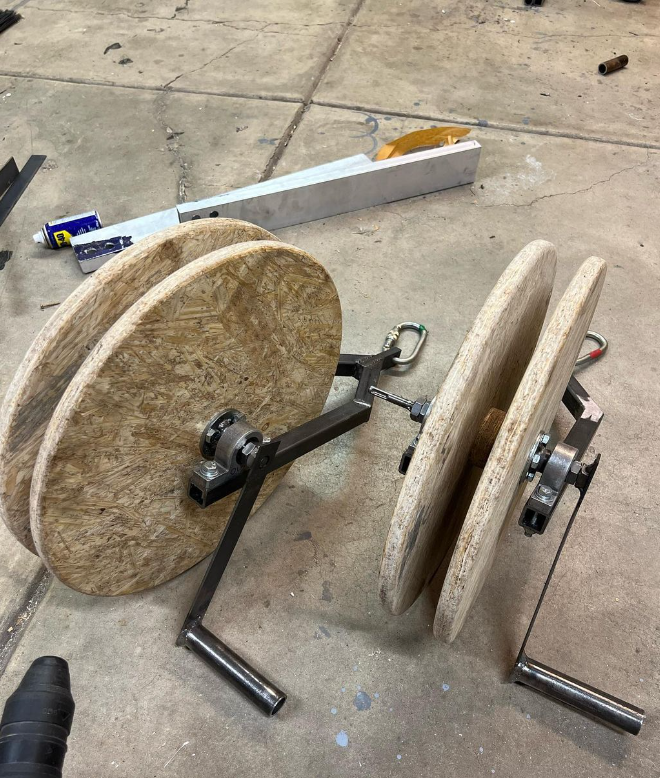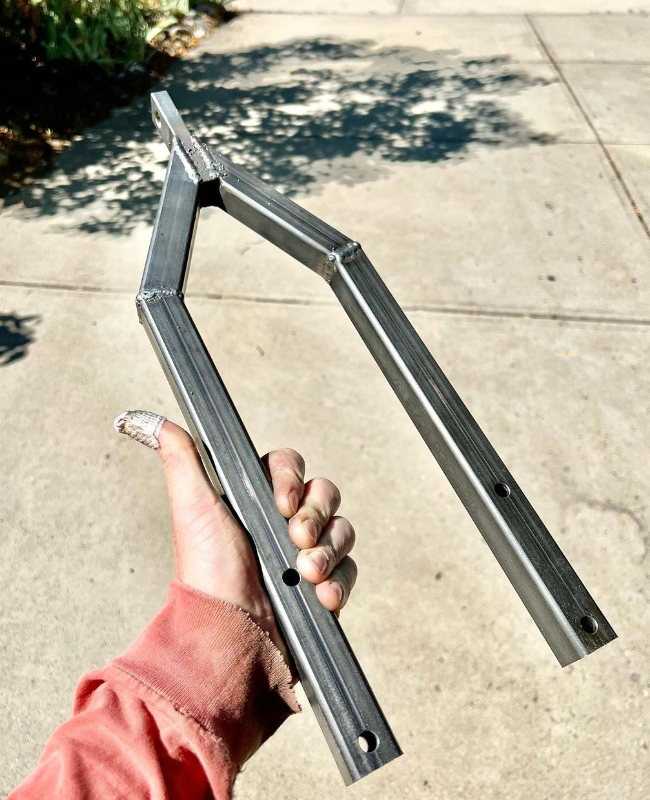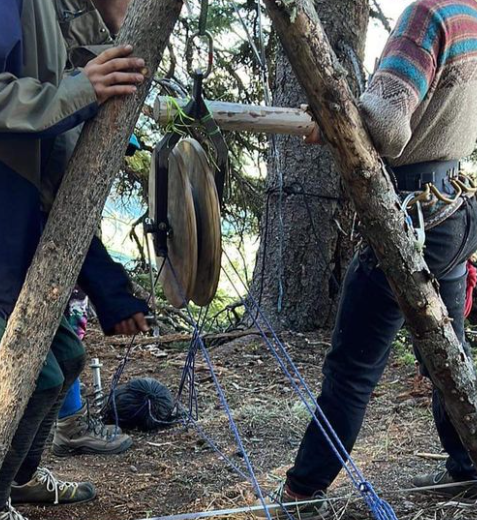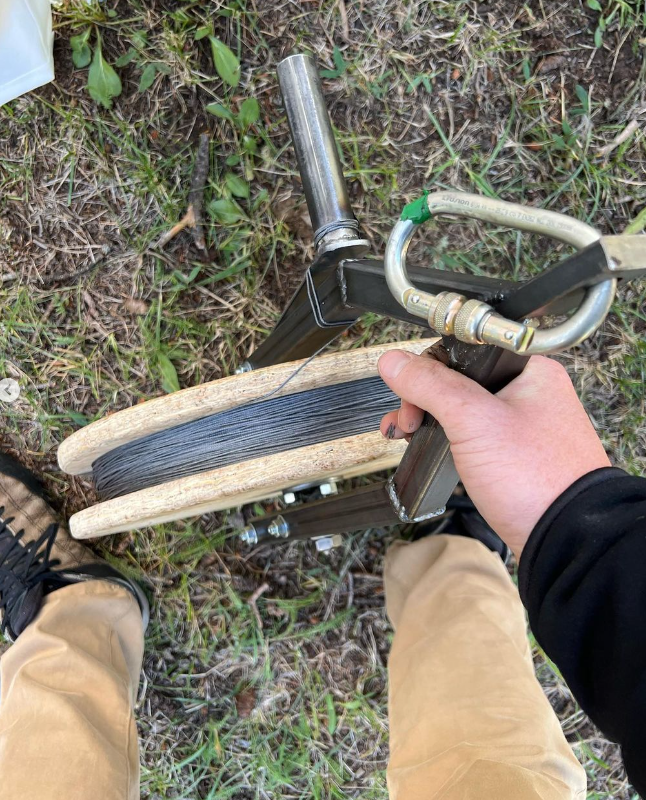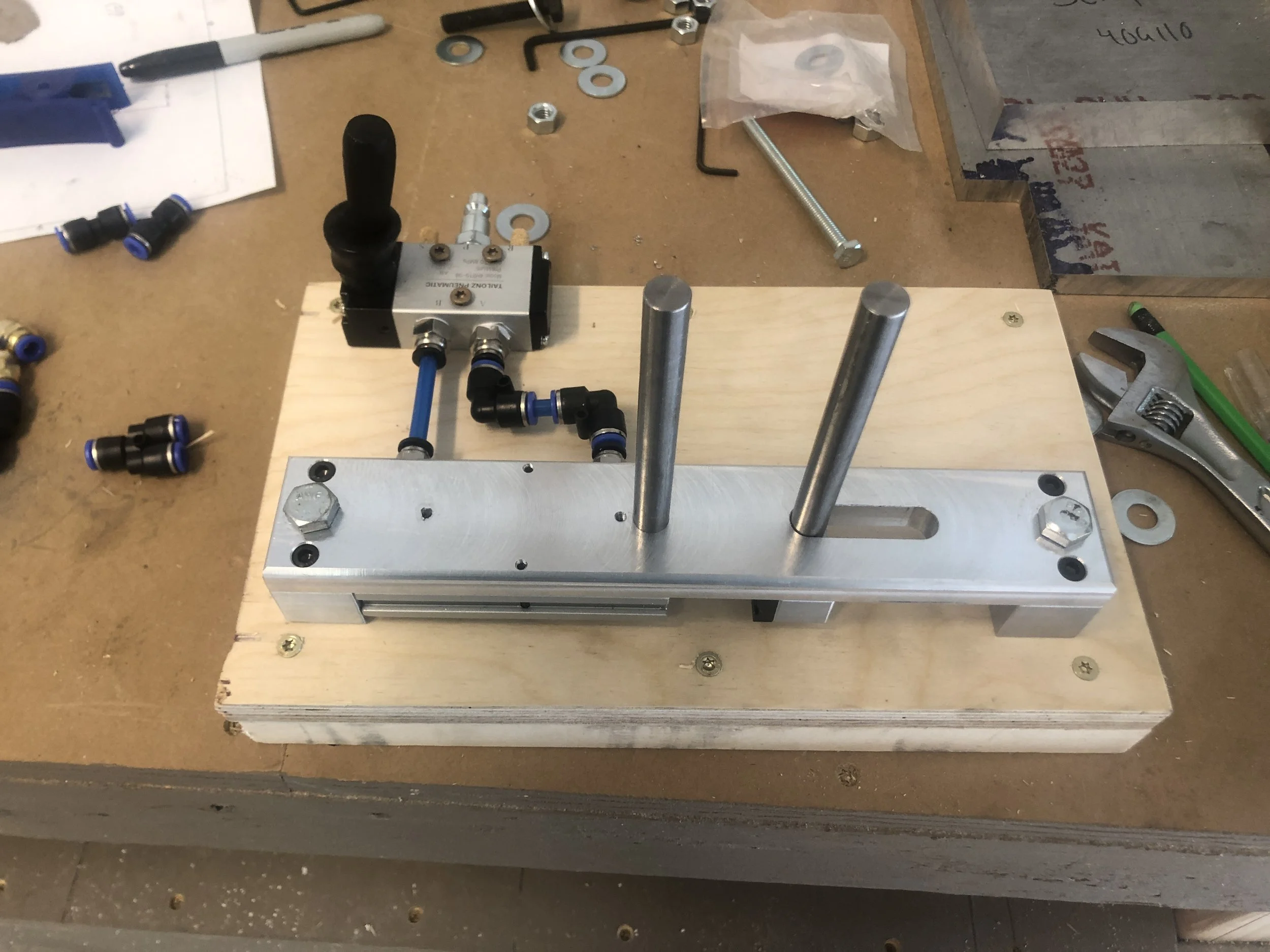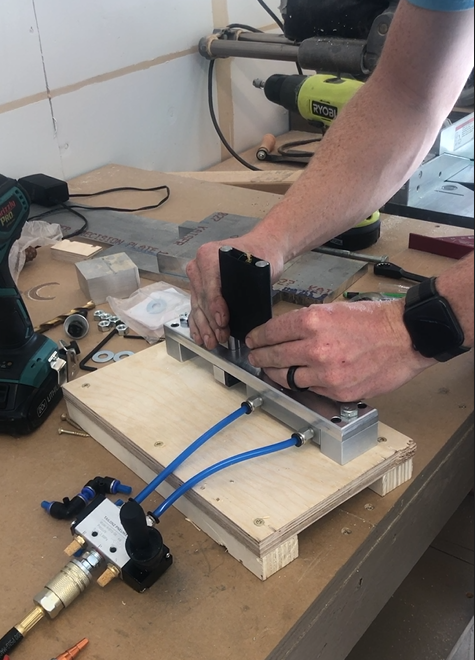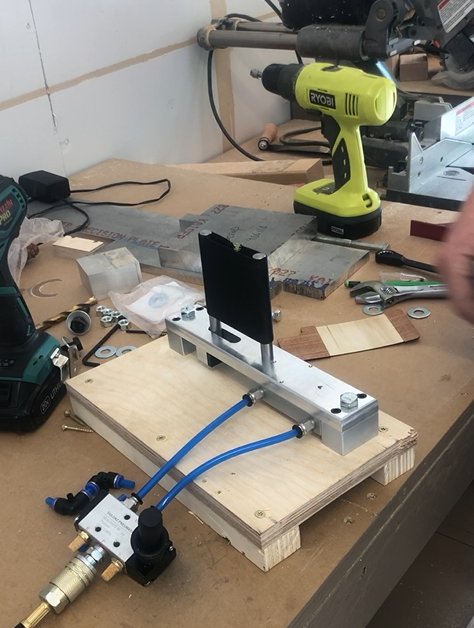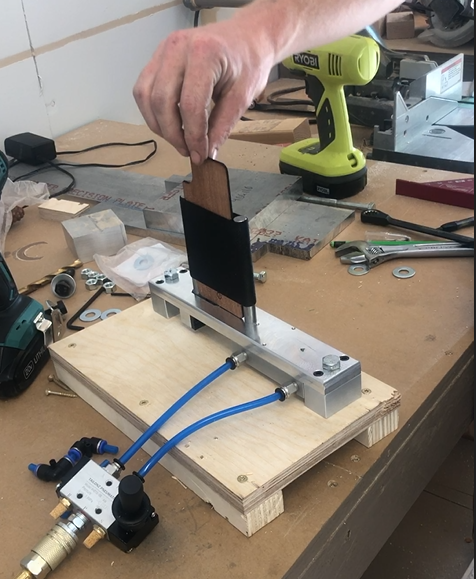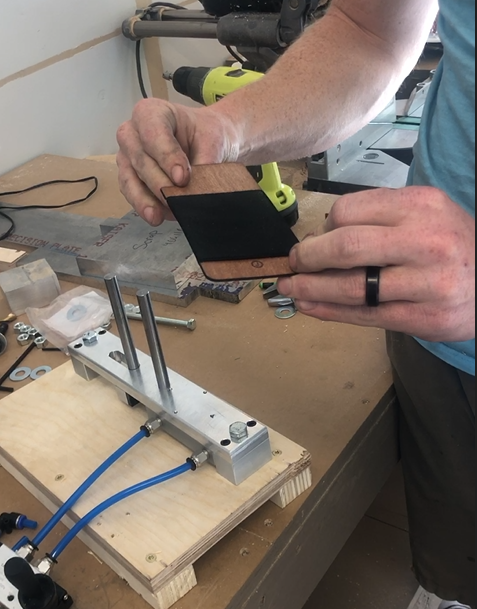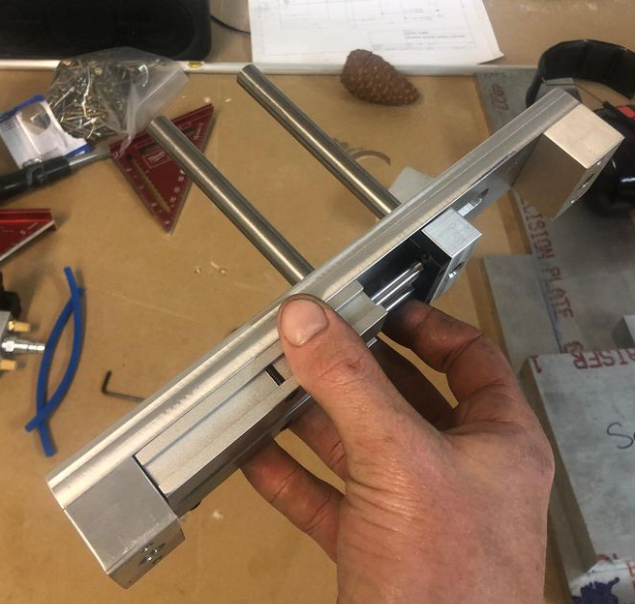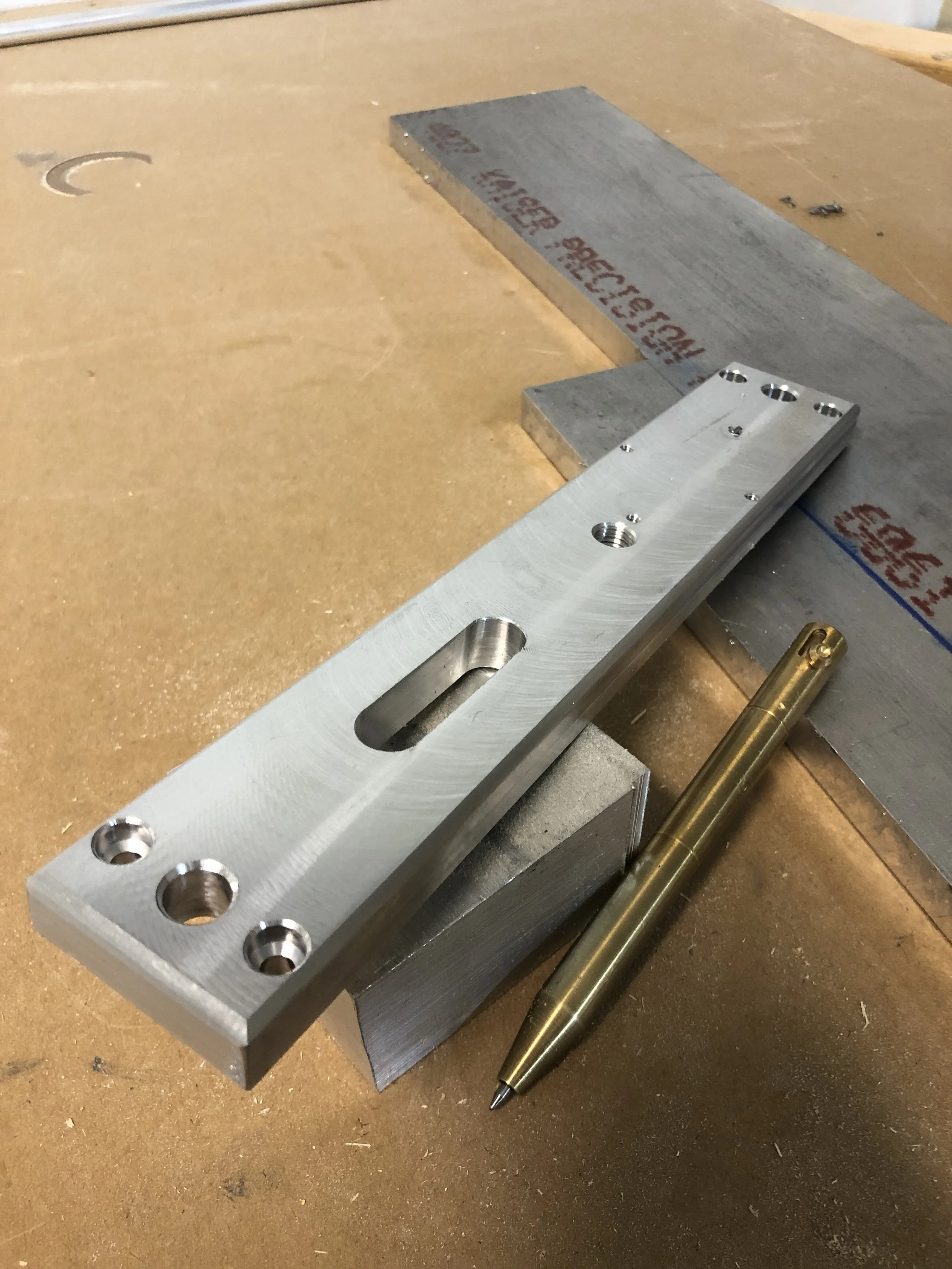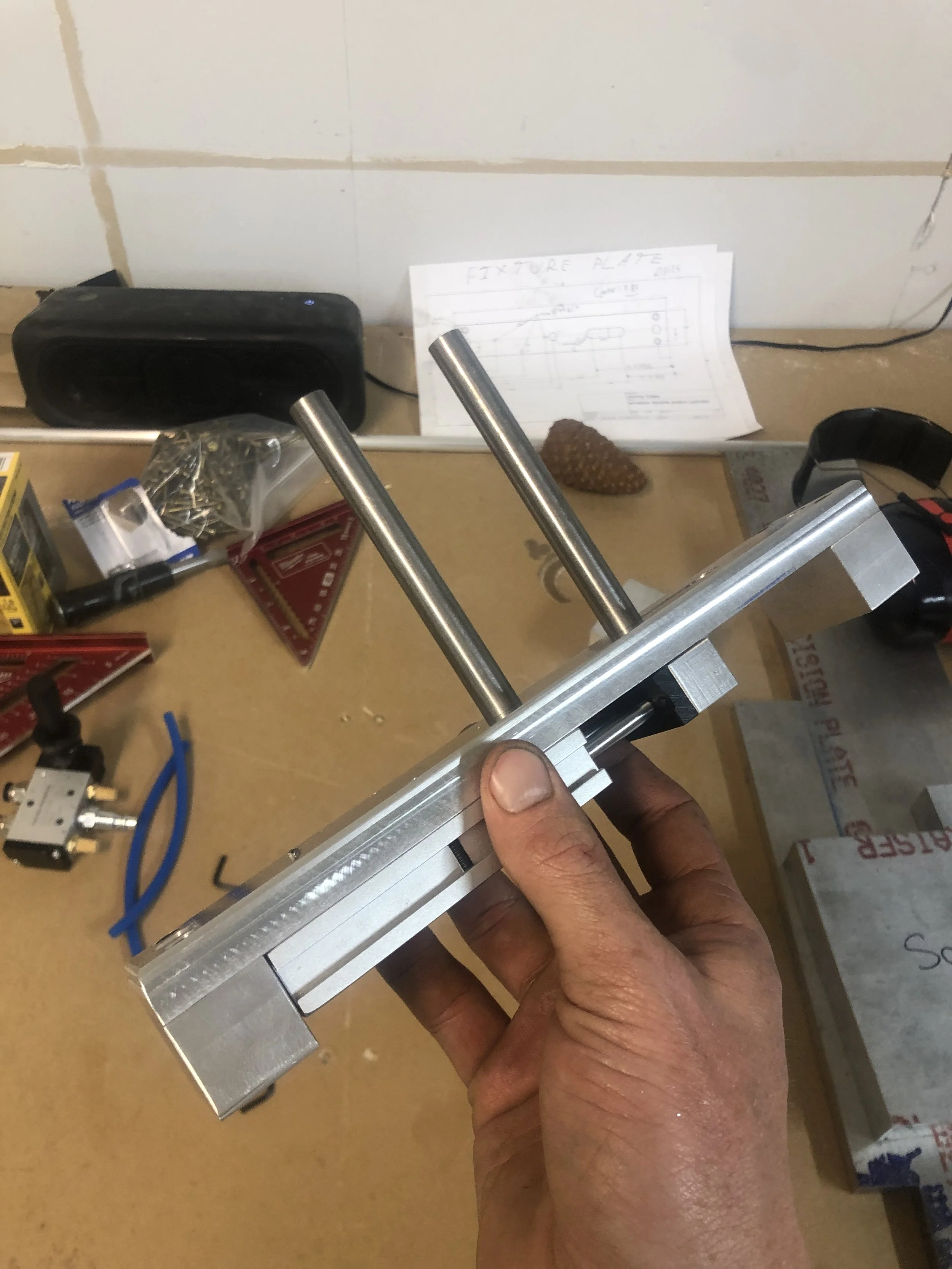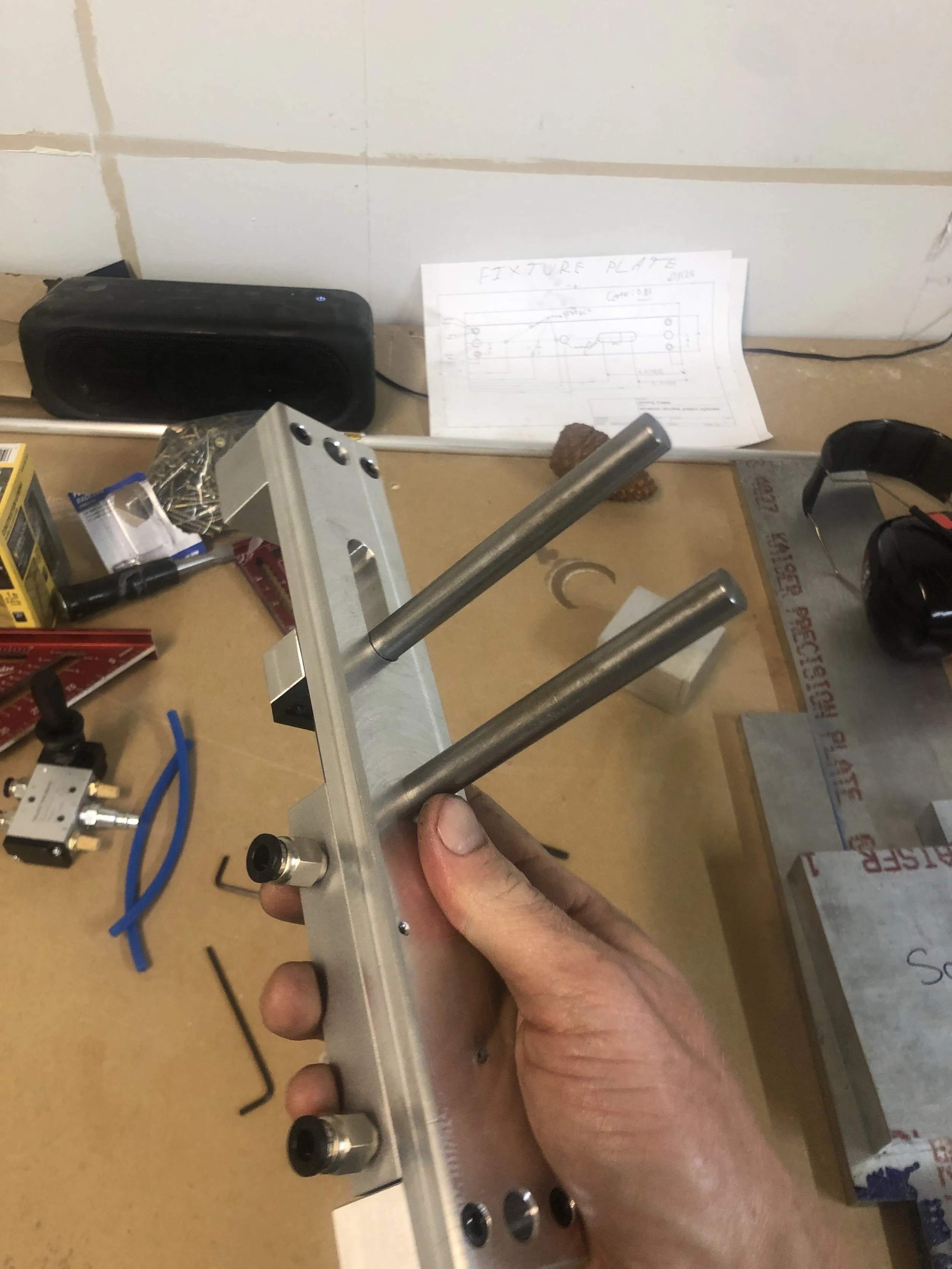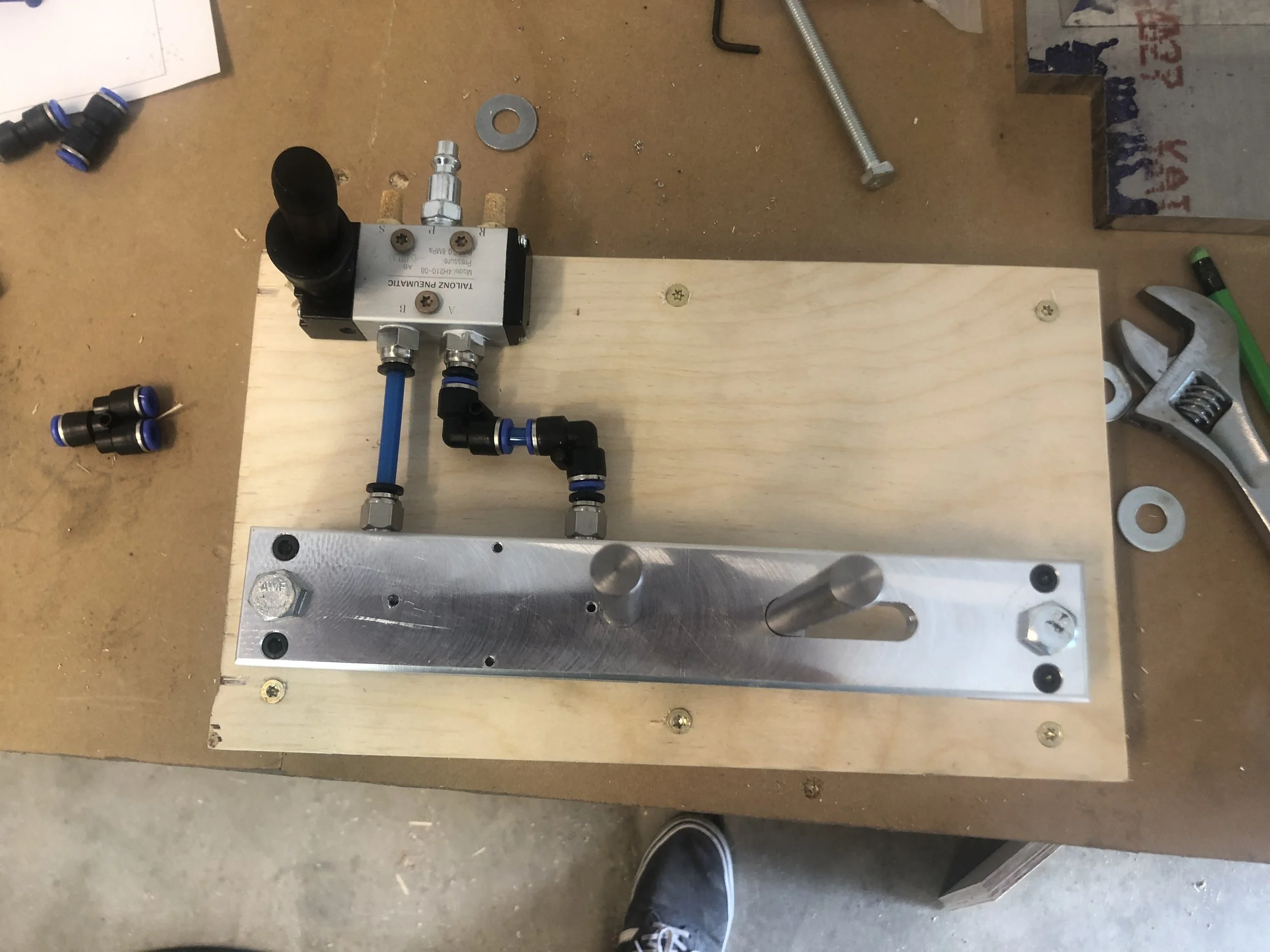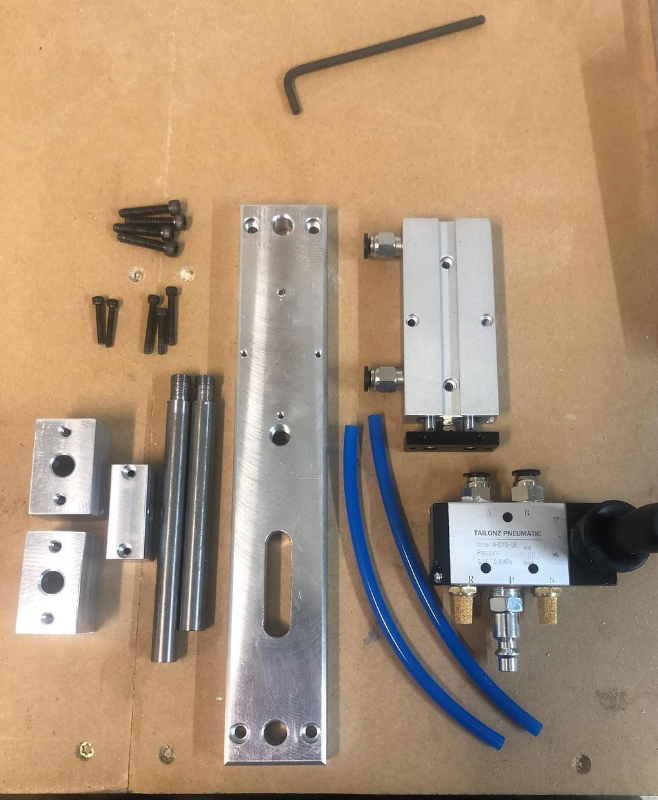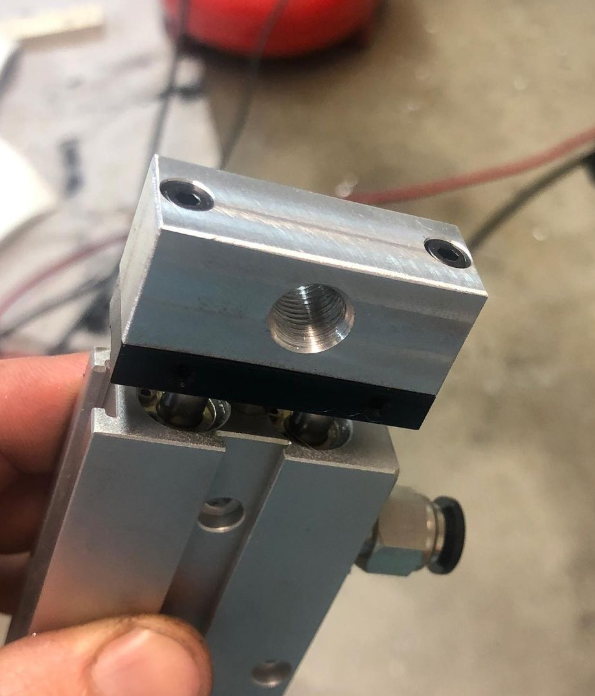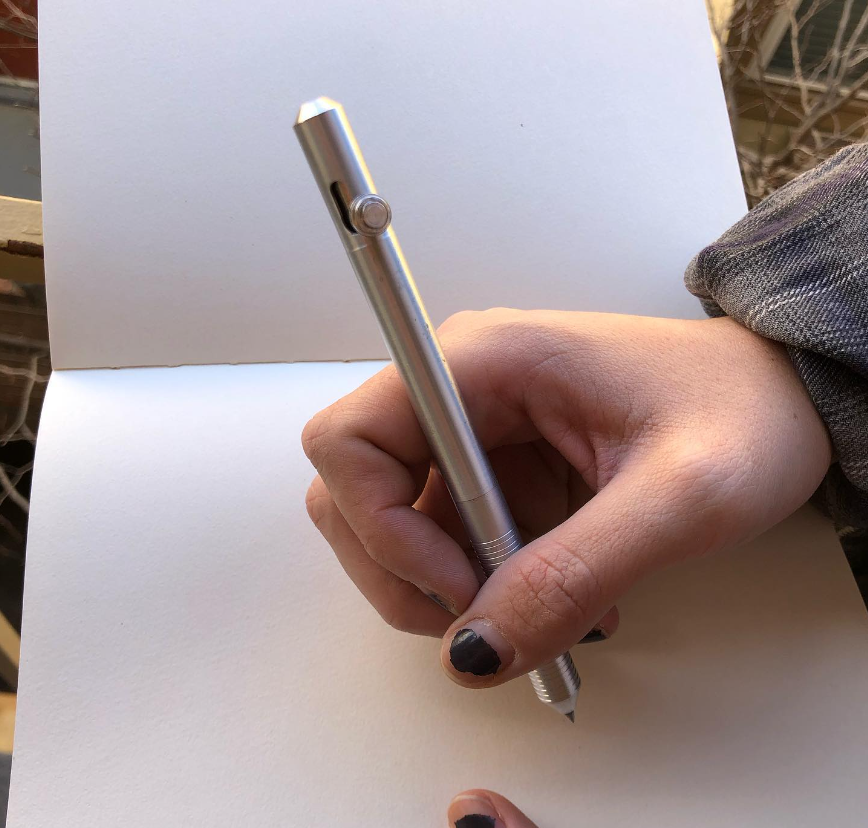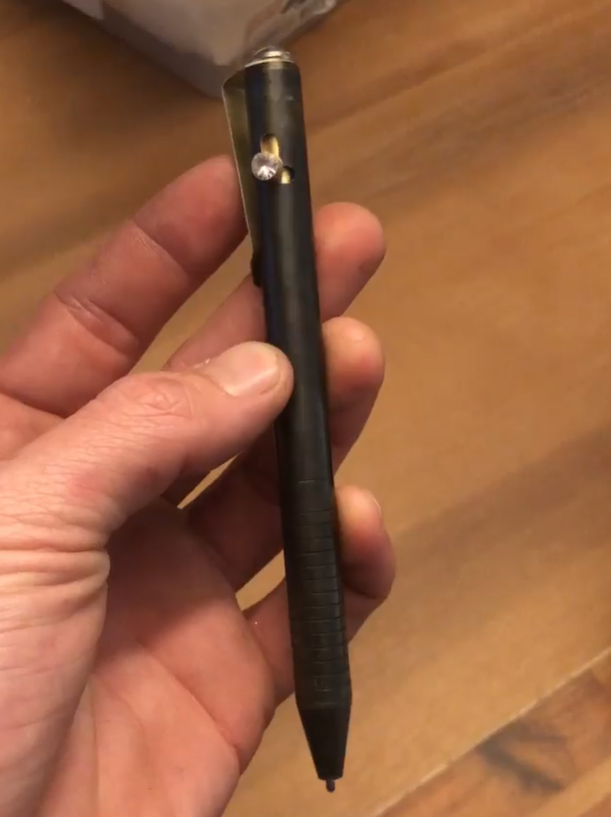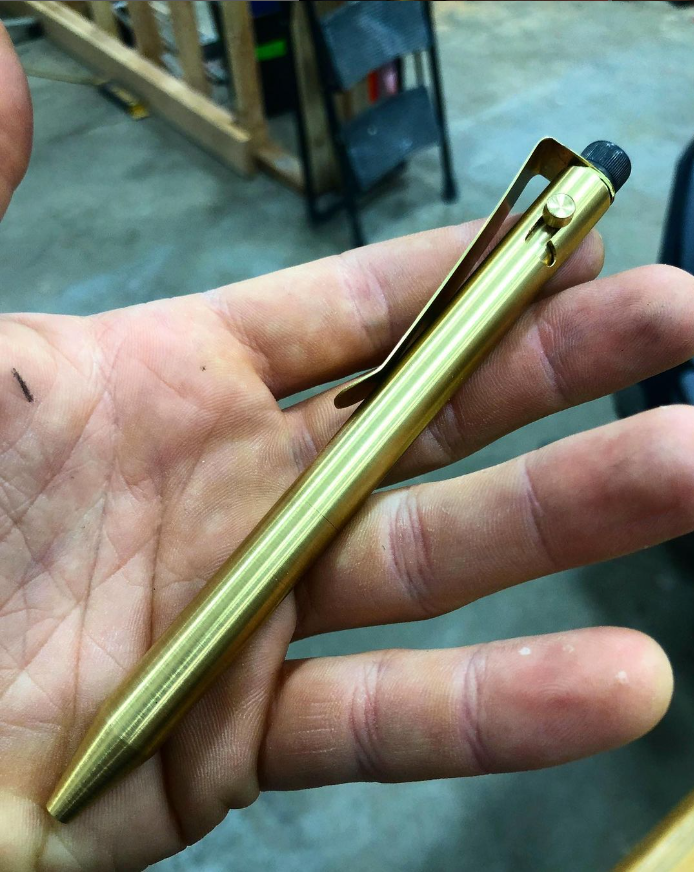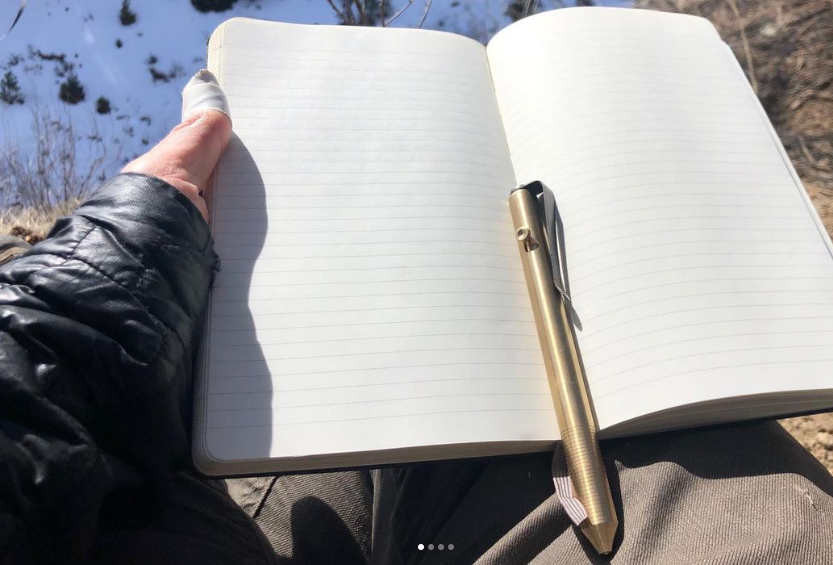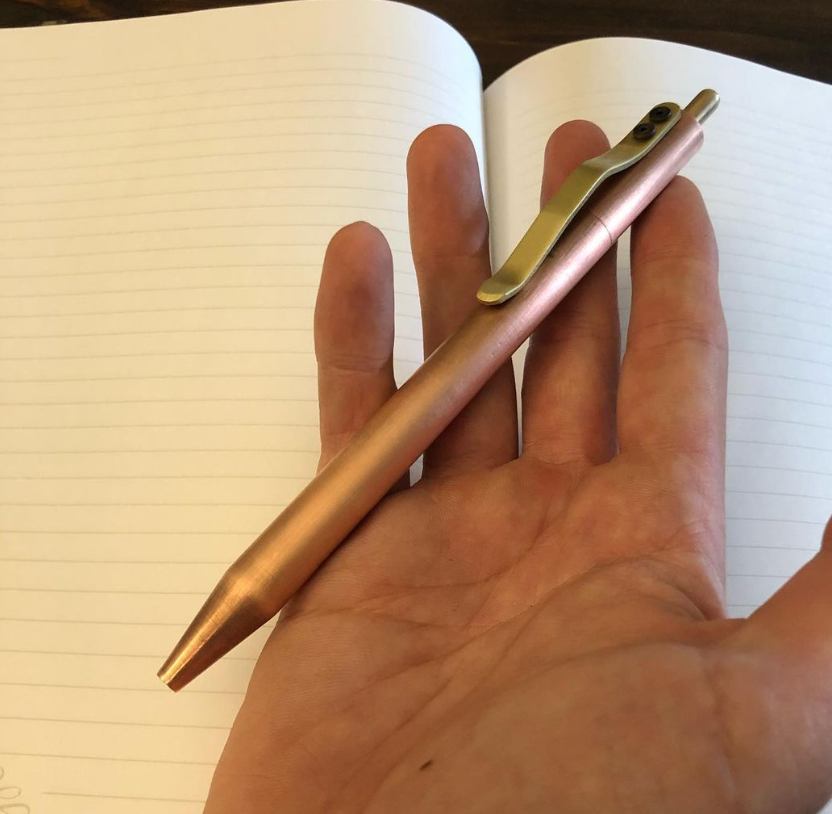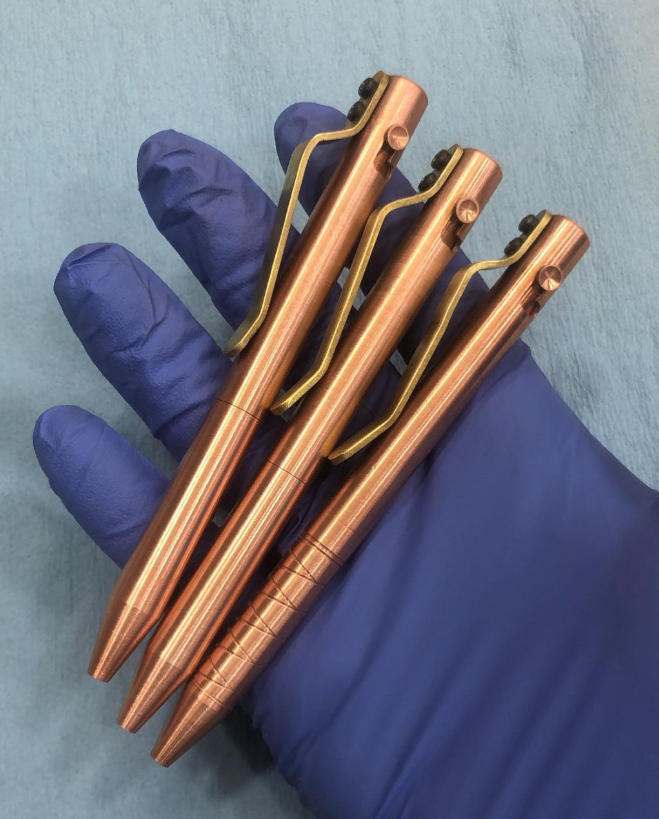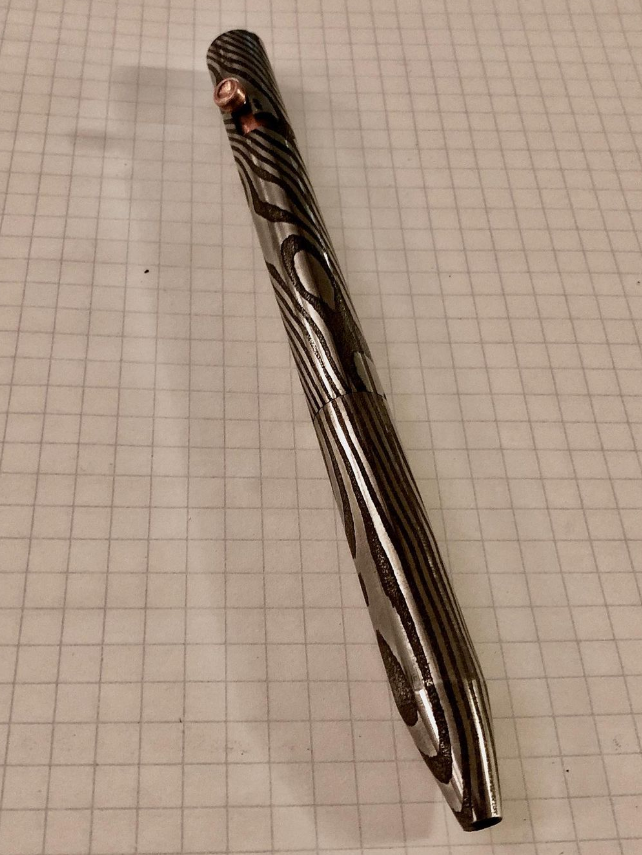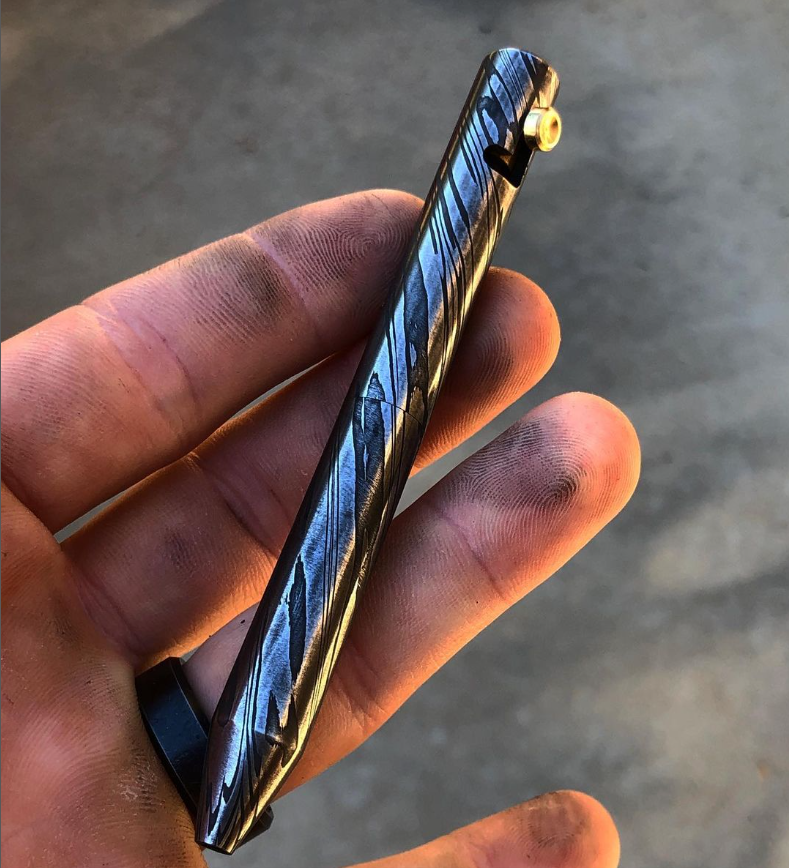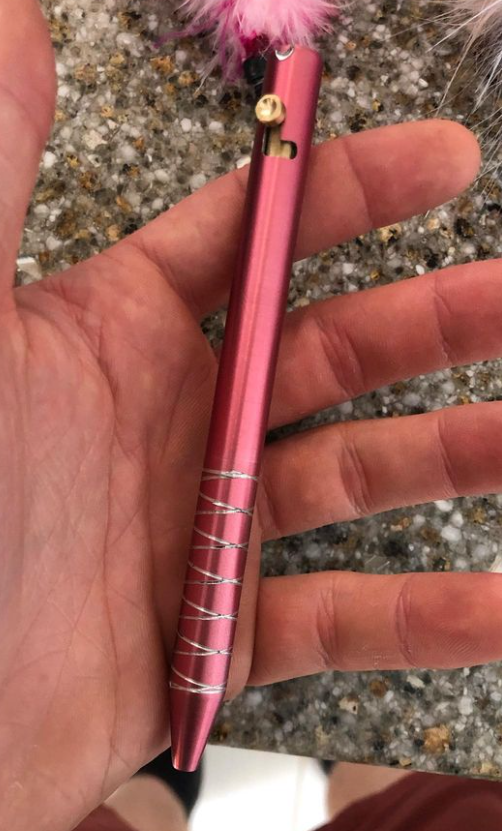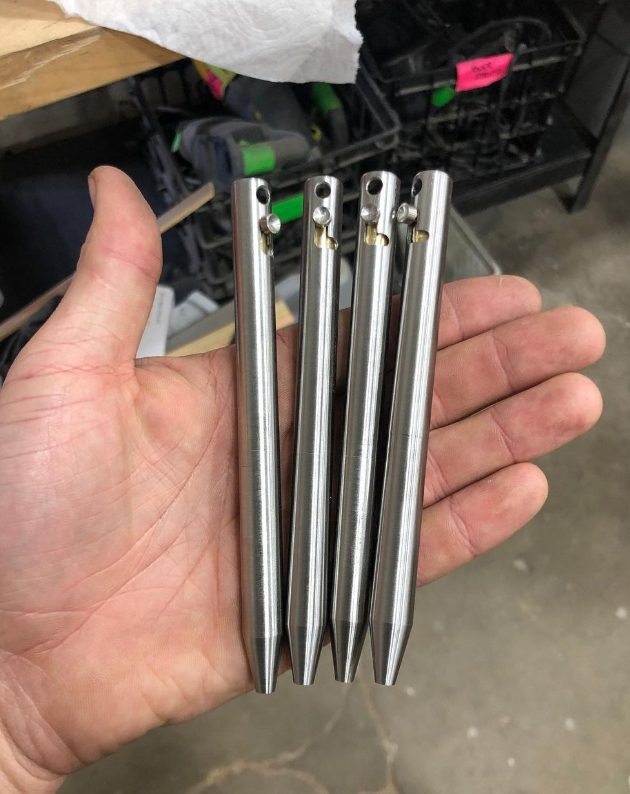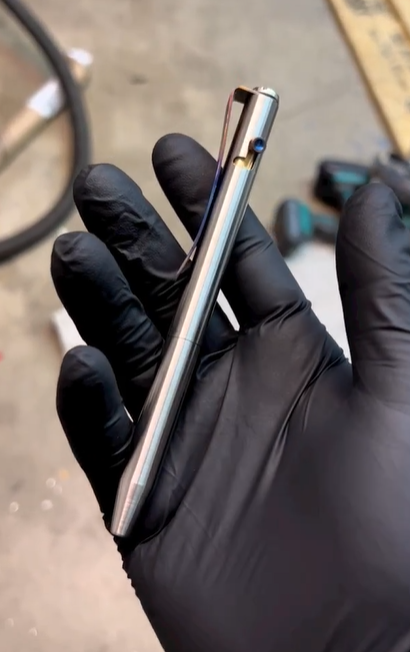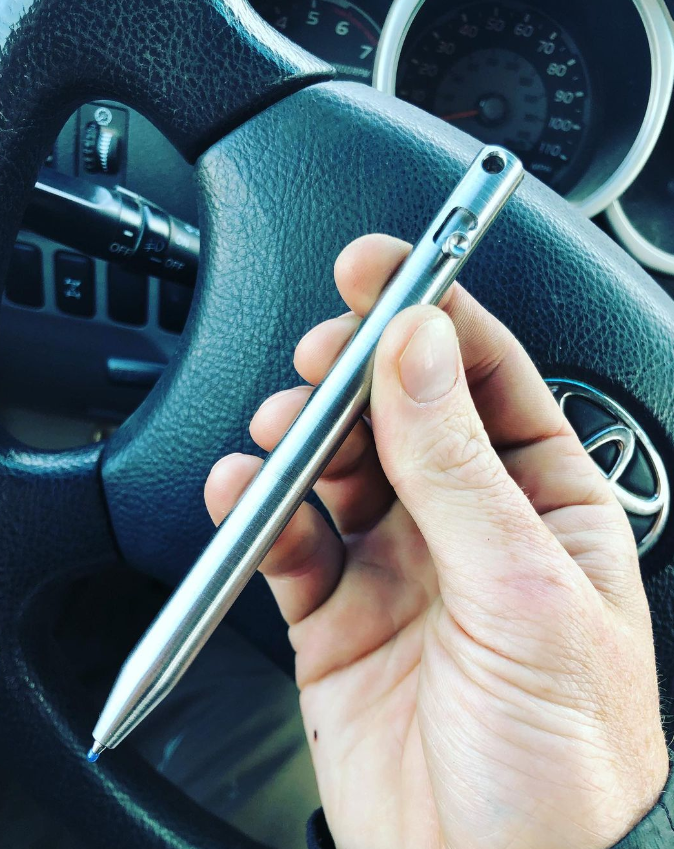Back Country Lurk
For those who know about telemark skiing, perhaps you have heard of a lurk. A lurk is a long ski pole that you hold with both hands and use to drag along the snow as you make turns down the mountain. A Slacklining friend who is a sponsored skier for Bishop skis came to me with the idea to make a collapsible lurk so that he could use them as trekking poles on the way up mountains when back country skiing.
I helped by designing and producing the first prototype of the back country lurk that my friend used for a whole season. After a successful trial season Bishop Skis took on the product, and with their updated designs I worked on manufacturing two more prototypes for them that is now a product they sell. Check it out here: https://bishoptelemark.com/products/san-juan-stick
Client
Bishop Skis
Year
2021
Saturn Highline Ring
Space Age Slacklines was a slackline company I ran before the start of Boulder Prototype. The Saturn ring was one of the two products that we sold through the company. As the lead designer and engineer of Space Age Slacklines, I designed and created the original Saturn Ring prototype and then enhanced that design for two production runs selling a total of 200 Saturn Rings.
In the sport of highlining, we are always tied into the highline through a safety tether called a leash, and a solid leash ring in which the highline is threaded through. As we walk along the highline, the leash ring drags behind us catching us if we fall. There became a need in the sport of highlining for larger inner diameter leash rings. The highlines got so long that we had to start connecting multiple pieces of slackline webbing together, often times with some kind of bulky connection point. You don’t want your leash to get caught up at the connections, so in came the large diameter leash rings.
The Saturn ring was unique in that it acts more as a thimble for your leash rather than tying the leash to it with a figure 8. Using a self-tightening barrel knot, tied around the outer circumference of the Saturn Ring, the 3” Inner Diameter of the Saturn ring was completely unobstructed for passing connections.
Client
Space Age Slacklines
Year
2020
SpaceLock
The first product I designed for Space Age Slacklines and the first prototype I designed and made for myself. This one really lit fire that is designing and machining for me.
A weblock is a device used in the sport of slacklining and highlining that, well, locks your webbing. 1” flat webbing is unlike rope, in that you typically don’t want to tie knots into it and subject it to high tensions, especially on webbing that you require to be as strong as possible. Instead, to fix the webbing at either end of the slackline, we use a weblock. You can install your webbing into a weblock at any point along the length of the slackline, and you can easily remove it when you are done. A good weblock retains 80-90% of the webbings true stregnth, and you can even use them as a one-way pulley for tensioning the slackline.
The one major drawback for weblocks? Slippage. Slacklining is rarely a static sport. The line is always bouncing and swaying, even when you are not trying to. What happens in slacklining and highlining, especially when someone may be intentionally bouncing the line, is that the cyclic loading in the weblock causes the webbing to micro-slip through the weblock. This is undesirable because you lose tension in the highline, but more importantly it is a safety concern and could cause a full failure of the system. If the tail of the webbing coming out of the weblock is not secured or organized, a twist can slip through the main friction lock of the weblock and cause the weblock to fail.
The SpaceLock was my take on an anti-slip weblock, with its own integrated tail tie-off method. Without reinventing the wheel, I sought to fix the common issue which is that everyone tied off their tails differently which makes it harder to inspect a highline rig. Using pins, diverters, and the body of the weblock, the SpaceLock offered a safe, effective, and repeatable tail tie-off method.
Check out the product video: https://www.youtube.com/watch?v=8H3YBCH6m5w
Trickline Collective Product Reel: https://www.youtube.com/watch?v=yv5p7hDTnXg
Client
Space Age Slacklines
Year
2020
Highline Winch Device
In 2022 I was part of a team who attempted to setup the longest highline is the United States at the time; a distance of 1mile outside of Durango CO. As you could imagine, the biggest challenge with setting up a highline this big is getting the slackline across the gap. We used a drone on this rig, which initially flew small but strong fishing line across the 1 mile gap. We needed a way to not only let out, but also reel in a whole mile of continuous fishing line, and there are no reels on the market that can spool up that much fishing line. So, I had to design something custom.
The requirements for this device were that it need to be (somewhat) portable, capable of spooling 5,280ft of fishing line, able to be anchored on a tree, able to operate in both directions, and an option for either manual or powered reeling. The Highline Winch was born, with a spool CNC’d out of plywood layers, a frame fabricated out of 1” square tube steel, and an integrated SDS bit attachment for a rotary hammer drill.
Client
Paradise Highline Community
Year
2022
Manufacturing Jig for iPhone Case
My aunt and uncle own a sewing shop/ manufacturing business, and they had the opportunity to take over manufacturing for an iPhone case. You’ve seen these cases before, the kind with the elastic band in the back to hold your credit cards and whatnot. The way this specific phone case was designed, was that this elastic band was wrapped around a thin wood panel, and that wood panel was glued to the back of the phone case body. They were in need of a manufacturing method for getting this elastic band around the thin wood panel, it would take someone 1-2 minutes to manually and carefully stretch the band around the panel.
They came to me to see if I could design up some kind of device to stretch the band so the wood panel could easily be placed inside. The method I worked with was pneumatics. Knowing they had compressed air readily available at work stations in their shop, it was a no brainer to utilize that to perform linear motion. The design was simple, a fixture plate with one rod fixed, and one rod that is fixed to a pneumatic cylinder beneath the fixture plate. Using a solenoid valve, you insert the band around the rods in the un-stretched position, flip the valve, insert the wood panel in the stretched position, flip the valve again, then pull off the wood panel/band combination. I brought the time of that specific step from 1-2 minutes to 4-5 seconds.
Client
Sonrise Apparel Services
Year
2022
Pens
I have always been fascinated with pens. Writing with a good solid pen is one of my simple pleasures in life. One of the first project any machinist does for themselves is making a nice pen out of metal. It is a fun lathe project, using almost every function it has to offer. Not to mention you can get real fancy with it by using exotic metals or machining different patterns into the metal. I don’t leave the house without the first pen I made for myself; 1/5” diameter, solid brass, steel pocket clip. It is always a conversation starter when someone notices it, and it just feels good to write with and have a pen that is really worth caring about. Everybody that has bought one of my pens agrees!
I have made pens out of brass, anodized aluminum, copper, bronze, stainless steel, and damascus steel. The damascus steel pens I have made are the most notable and beautiful. I am lucky enough to be friends with a blacksmith who forges his own damascus patterns, and he has given me some damascus rod to play around, and the results are stunning. Check out my Etsy page for pens that I have in stock for sale, as well as my other machined art pieces.



